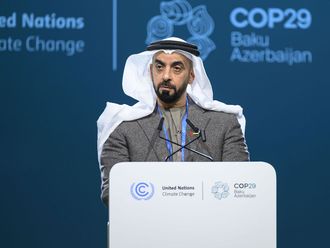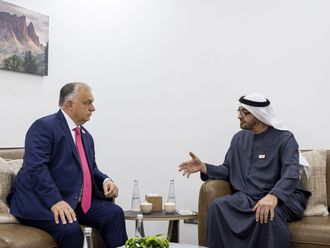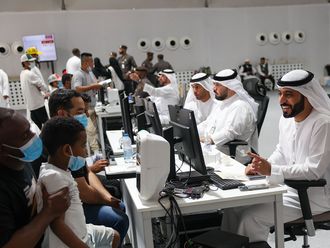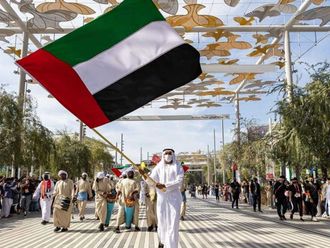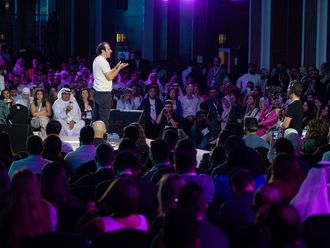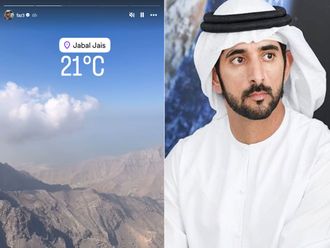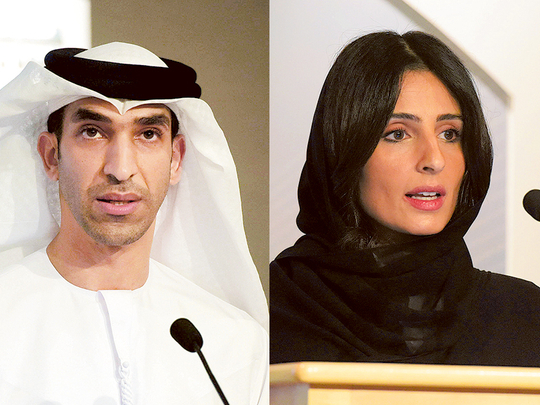
Abu Dhabi: Abu Dhabi’s direct greenhouse gas emissions have gone up by 16.3 per cent between 2010 and 2012, thanks to economic and population growth during this period.
However, the Environment Agency - Abu Dhabi’s (EAD) results of its second Greenhouse Gas (GHG) Inventory Project released on Monday disclosed that 115 million tonnes carbon dioxide-equivalent of emissions in 2012 did not exceed 0.21 per cent of the world’s GHG emissions in the same year.
Greenhouse gases absorb solar radiation and traps it within the Earth’s atmosphere, causing climate change.
The inventory project, done every four years as part of the UAE’s commitment to the global fight against climate change, revealed the key emission sources came from three sectors — energy (48.8 per cent, including electricity and water production and oil and gas), industry (25 per cent) and transport (16.8 per cent).
The first GHG inventory conducted in 2010 had measured the emissions at 99 million tonnes CO2 (carbon dioxide) equivalent.
Dr Thani Ahmad Al Zeyoudi, UAE Minister of Climate Change and Environment, said: “We are preparing a comprehensive national plan for climate change to reduce carbon emissions and promote national measures to mitigate climate change. The GHG Inventory plays a vital role in providing inclusive data related to GHG at all levels, their effects on ecological systems and economic sectors and potential mitigation possibilities. Last week, we deposited the UAE’s instrument of ratification at the UN event for the Entry into Force of the Paris Agreement, which aims to limit global temperature rise due to climate change to well below two degrees above pre-industrial levels,” he said.
Razan Khalifa Al Mubarak, secretary-general of EAD, said: “The inventory is the first step in the development of a low carbon future as it identifies key emission sources. As such moving forward, to reduce our emissions we will need to focus on policy levers that address how we generate and consume water and electricity, optimise efficiency of our oil and gas production, manage transportation and city expansion, and encourage innovation within manufacturing,” she said.
Al Mubarak said addressing climate change and enhancing air quality are key programmes in the Abu Dhabi Plan 2020.
Shaikha Ahmad Al Hosani, deputy executive director of Environment Quality at EAD, said Abu Dhabi has the potential to reduce about 40 per cent emissions compared with its historical trajectory by the year 2030 and the inventory will help in that direction. The largest potential for emission reduction is in combined electricity and water production (22 per cent), followed by transport (12 per cent) and waste (6 per cent), she said. The UAE’s peaceful nuclear energy programme will provide reliable nuclear energy without any GHG emissions but saving up to 12 million tonnes of emissions every year.
Compared with West Asian countries, Abu Dhabi’s emission indicators in 2012 linked to the economy or electricity production were low according to International Energy Agency (IEA) reports, Al Hosani said.
This reflects the effective performance of economic development with low emission intensities in Abu Dhabi, and the use of efficient technology and clean fuel compared to other countries in the region.
Although Abu Dhabi’s emissions are quite small in comparison to other developing countries, the per capita CO2 emission is among the highest in the region. However, Al Hosani said per capita emission was not the sole criterion to measure a nation’s contribution. IEA says that no single indicator can provide a complete picture of a country’s CO2 emissions or its relative capacity to reduce emissions, she said.
In numbers
Three key sources of emissions –
Energy (48.8 per cent -including electricity and water production and oil and gas)
Industry (25 per cent)
Transport (16.8 per cent).
Abu Dhabi to reduce 40 per cent emissions growth by 2030 in:-
Combined electricity and water production (22 per cent)
Transport (12 per cent)
Waste (6 per cent)
12m tonnes of emissions savings by nuclear energy


